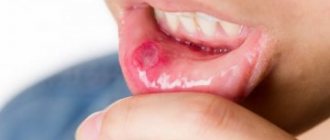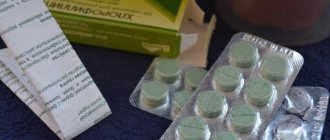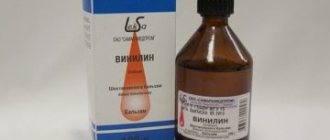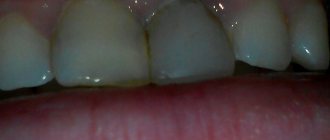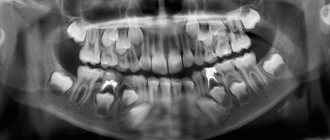What is a disease
Stomatitis is considered a lesion of the oral mucosa.
The reasons for the development of this pathology are:
- infection by infections (viruses, bacteria, fungi);
- medicines;
- autoimmune processes.
Children develop painful ulcers in their mouths. They are quite deep, but heal without scarring. If the baby has immune disorders, then the ulcerative process is continuous. Previously formed ulcers simply do not have time to heal before new ones appear. The acute process becomes chronic. That is why it is important that nutrition for stomatitis is gentle, at the same time complete and varied.
General diet rules
A special feature of the diet for this oral disease should be food that is as neutral as possible and does not irritate the mucous membranes. It should be well crushed and have an enveloping and slimy consistency.
When organizing meals for a baby with this disease:
- It is necessary to adhere to small, frequent meals. Portions should be small, and the frequency of intake should be five or six times a day. It will be easier for the baby to eat a small portion, and it will be easier for parents to feed him.
- All food should be crushed as much as possible, and the consistency should resemble puree. Meat and fish are used only in the form of minced meat. The temperature of the food should not be higher than forty degrees, neither hot nor cold.
- Before eating, you can treat the child’s oral mucosa with products containing painkillers. You can use: Kamistad, Kalgel, Cholisal. Also, for pain relief before eating, you can give your baby Ibuprofen or Paracetamol. They will numb the mucous membrane in the mouth. You can safely feed your baby.
- After eating, be sure to rinse your mouth with water at room temperature. Then the mucous membrane is treated. For this, any disinfectant solutions are used (Furacillin, Chlorhexidine, Stomatofit, Miramistin). To do this, you can use decoctions of chamomile or sage herbs. This is done in order to disinfect the lesions and prevent the development of a secondary infectious process.
- It is necessary to apply oils to the mucous membrane that have the ability to activate reparation (recovery) processes.
It is impossible to cope with the disease with diet alone; it must be treated.
what to feed a child with stomatitis
“We got sick on Friday, and our pediatrician said that my throat was red - SARS. She prescribed antibiotics, but today it turned out to be stomatitis, the gums were swollen terribly and were bleeding. Let's go to the dentist. and she is shocked by the prescription of antibiotics - they provoke thrush in case of stomatitis. So we were not treated, but maimed. I found a good article about this. Maybe it will help someone recognize the disease in time.
The baby cries and worries, constantly puts his hands in his mouth... And the reason for this is not at all due to teething, but due to stomatitis. And older children are not immune from this trouble. Dentist Tatyana Zinchenko will tell us what kind of disease this is and how to treat it.
– What do parents need to know about stomatitis and what can cause them?
Stomatitis is an inflammation of the oral mucosa of various nature. Let me list the most common causes of stomatitis point by point. This:
Injuries to the oral mucosa (traumatic stomatitis): mechanical damage, exposure to high temperatures, low temperatures, radiation, adverse meteorological factors.
Infectious lesions of the oral mucosa (infectious stomatitis): lesions in acute and chronic infectious diseases: viral stomatitis, bacterial stomatitis, fungal stomatitis, fusospirochetosis; for specific infectious diseases: measles, scarlet fever, chicken pox, tuberculosis, syphilis, etc.
Allergic and toxic-allergic stomatitis: contact allergic stomatitis, fixed and widespread allergic stomatitis: from medications, nutrients, etc.;
Dermatoses with damage to the oral mucosa (erythema multiforme exudative, etc.).
– How to determine that a child has stomatitis?
Clinical manifestations of stomatitis are varied. The child suddenly became irritable and capricious, his sleep apparently worsened, he refused to eat, and complained of pain in his mouth. Body temperature may rise, dyspeptic disorders may occur: bloating (flatulence), diarrhea, pain, rumbling in the stomach, etc. This is a sufficient reason to pay close attention to his oral cavity.
– And what can mom see there?
First, palpate the child's submandibular and anterior cervical areas. Most often, small swellings can be found there - enlarged lymph nodes, painful or painless.
In the child’s mouth, you will notice various kinds of redness, plaque, ulcers (aphthae) with or without plaque, blistering rashes, etc. on the mucous membrane.
- How to proceed then?
If you notice these symptoms in your child’s oral cavity, you should seek help from a dentist. General treatment, if necessary, is prescribed by a pediatrician.
– We already know that there are different types of stomatitis. What type of illness do children get most often?
Infectious stomatitis of a viral nature - herpetic stomatitis.
– It’s more common, of course, to find herpes on the lips...
Nothing like this. Herpes (from the Greek herpes - fever) is the most common viral infection in humans, existing for a long time in the body. Moreover, mainly in a latent (hidden) form. No infection has such a variety of clinical manifestations as the herpes virus. It can cause damage to the eyes, nervous system, internal organs, mucous membrane of the gastrointestinal tract, oral cavity, genitals, can cause cancer, and has a certain significance in neonatal pathology and the occurrence of hypertension.
– And in dental practice?
Most often, there are two main forms of herpetic infection: primary, occurring as acute herpetic stomatitis (AHS), and recurrent - in the form of chronic recurrent herpetic stomatitis (CRHS).
– At what age can babies get sick?
The frequency of primary herpesvirus infection increases in children after 6 months of life, when antibodies received from the mother disappear. The peak incidence occurs at the age of 2-3 years. Herpes virus infection often occurs in newborns.
Acute herpes stomatitis occurs as an infectious disease; its clinical picture consists of symptoms of general intoxication and local manifestations of damage to the oral mucosa. Depending on the severity and nature of these two groups of symptoms, mild, moderate and severe forms of the disease are distinguished.
– Please tell us about each of them?
Mild form - characterized by body temperature 37-37.5ºС, redness of the oral mucosa, swelling, mainly in the area of the gingival margin, single or grouped lesions (rashes).
The moderate form is characterized by body temperature 38-39ºС, nausea, weakness, headache. During the height of the disease, elements of the lesion appear both in the oral cavity (from 5 to 25), and often on the skin of the face in the perioral area. In the oral cavity, gum inflammation and severe bleeding are pronounced.
The severe form is characterized by body temperature 39-40ºС, nausea, vomiting, weakness, headache, musculocutaneous pain, tachycardia (increased heart rate), nosebleeds. There is also an increase in the cervical and perimaxillary lymph nodes. In the oral cavity, the mucous membrane is sharply swollen, the gums are bleeding, there are more than 20 lesions. Rashes are also often localized on the skin of the oral area, eyelids, earlobes, fingers, they often merge.
– It’s not easy to feed a baby with stomatitis. But you can’t leave him without food, right? How to organize meals during illness?
It is very important to provide normal nutrition appropriate to the child’s age. Children with stomatitis usually have difficulty eating. Therefore, before eating, you need to lubricate your lips, tongue, and gums with painkillers prescribed by your doctor.
Any low-fat fermented milk products and low-fat milk are recommended, since fats are poorly digested in a child with stomatitis and cause intestinal upset. Give him vegetable decoctions, well-mashed boiled vegetables, boiled porridge, noodles, a soft-boiled egg, a liquid omelet. If you give meat or fish, then only boiled and minced twice. All food should be warm, not hot or cold. It goes without saying, completely eliminate everything salty and sour, and limit sweets. You can only sweeten your food slightly. Feed your child no more than 3-4 times a day and do not give anything in between. Breaks are needed so that the medicine can take effect and to injure the mucous membrane as little as possible. Give it a drink at any time, but not immediately after medicating your mouth. And give your child not only water, but also non-irritating vegetable, fruit, berry juices and rosehip infusion.
Provide the patient with separate dishes, towels, and toys. Ventilate the room in which it is located often. If your child attends kindergarten, do not forget to inform them about his illness.
– What essential medications should be in the family first aid kit in case of stomatitis in a child?
First of all, antiviral drugs. Human leukocyte interferon (ampoules), ointments: bonaftone 0.05%, riodoxol 0.25%, tebrofen 0.25%, florenal 0.5%, oxolinic 0.25%; acyclovir cream (Zovirax).
Antiseptic agents are also necessary, for example, a solution of chlorhexidine bigluconate 0.05%.
Keratoplasty preparations (epithelializing) include:
methyluracil 10% ointment;
actovegin gel 20%;
solcoseryl ointment, solcoseryl jelly;
oils containing large amounts of vitamin A: rose hips, sea buckthorn;
karatolin, actually an oil solution of vitamin “A”;
oil solution of vitamin "E".
For fungal stomatitis, antifungal drugs will be needed, respectively:
antifungal antibiotics – levorin ointment 500,000 units, nystatin ointment 250,000 units; caramel with dikamin. Alkaline drinking (mineral waters) and sodium bicarbonate (baking soda) will also bring relief. It is necessary to prepare a solution that has an alkaline reaction and rinse. After all, fungi reproduce only in the acidic environment of the oral cavity.
– What herbal remedies may be useful?
For example, decoctions of chamomile, sage, eucalyptus, etc.
– How can a child relieve discomfort and pain?
Local anesthetic, that is, painkillers, drugs. For example, anesthetic 5% emulsion, which is prepared according to a prescription at a pharmacy, or pyromecaine 5% ointment.
– Why is prescribed treatment so important?
When using any medication, you should consult your doctor and do not self-medicate, because acute herpes stomatitis can become chronic, and then relapses of the disease can occur from 1 to 8 times a year.
In conclusion, I would like to remind you that very important in maintaining the health of your child and preventing stomatitis is the general health of the child, balanced nutrition, sleep and rest patterns, hardening, sanitization of infectious foci, elimination of foci of chronic diseases, as well as timely sanitization of the oral cavity.”
Authorized Products
The diet for stomatitis in children includes certain foods that do not irritate the oral mucosa.
Proper nutrition includes:
- Vegetables (boiled, baked, steamed) - dishes made from them do not injure, do not irritate, and at the same time provide the body with vitamins and minerals. It is recommended to take vegetables with a delicate structure (broccoli, zucchini, potatoes, pumpkin).
- Fermented milk drinks and products should definitely be included in the child’s diet, but they should not contain a lot of acid. It is worth giving preference to soft neutral cottage cheese, Varenets, and fermented baked milk.
- Cereals - they are used to prepare porridges. They have an enveloping effect. They provide the body with B vitamins. The cereal must be well boiled.
- Fruits – usually choose moderately sweet, neutral, non-acidic fruits. It is better to take bananas, watermelons, melons, crumbly sweet varieties of apples and pears.
- Fish dishes - for their preparation, it is advisable to use fatty varieties of sea fish. To prepare either minced fish or steam it, remove all the bones so that the baby cannot injure the oral mucosa. Fish is a source of easily digestible protein, vitamins, microelements and polyunsaturated fatty acids.
- Meat dishes - only soft, lean types (veal, rabbit, chicken, turkey) are used to prepare them. When cooking, it is better to prepare minced meat products. Steam them or bake them in the oven. You can cook: soufflé, cutlets, meatballs.
- Liver - it can sometimes replace meat dishes; it is also better for preparing cutlets, soufflés, pates and similar dishes.
- Casseroles - can be prepared from vegetables, cereals, pasta, cottage cheese.
- Soups and broths – puree soups and low-fat broths are widely used in dietary nutrition.
- Soft cheeses are a good source of calcium. It is high in calories, easily digestible, and nutritious.
- Dried fruit compotes and jelly are a source of vitamins and microelements. It is better to replace tea with these drinks.
- Juices must be natural, freshly squeezed. To do this, it is better to take non-acidic fruits and vegetables (pears, apples, carrots).
The use of these products in a diet for stomatitis will make the diet high in calories and nutritious, at the same time gentle.
What foods should you stay away from?
As noted earlier, all irritants must be removed from the menu. Various sweet and sour juices and soda are prohibited. If the child has previously eaten dishes with seasonings, then they should also be excluded from the menu. It is also important to minimize the amount of salt (it makes the pain worse), which means you should also avoid sausages, crackers, chips and other snacks.
Various snacks are prohibited during the treatment period
Don't give your baby stale bread! Only fresh and only made from white flour (don’t forget to trim the crust first). Also exclude waffles and cookies from the menu so that they do not injure the mucous membrane and crumbs do not fall into the ulcers.
- How to rinse your mouth for stomatitis in adults
In addition, you will have to give up sweets for the entire period of treatment. Not only does the effect of sugar negatively affect the course of the pathology, but the mucous membrane can also be injured by the sharp edges of the candies. Despite the fact that fresh fruits are very healthy, they can be harmful for a child suffering from stomatitis. Rough peel can injure the thinned mucous membrane, and therefore prolong the disease. Moreover, the acids contained in plums, apples, etc., irritate the mucous membranes, further increasing inflammation and pain. Therefore, before serving, they need to be prepared - boiled or baked.
Boiled apples
On a note! Allergic stomatitis implies the complete exclusion of possible allergenic products. Although this is also true for other types of the disease, during this period the state of immunity is not simple, therefore, substances that were previously well tolerated can provoke an allergic reaction and food intolerance.
Food allergens
Try to exclude from the diet of a small patient:
- everything that previously caused allergies;
- preservatives/dyes;
- chocolate products;
- citrus;
- honey.
Citrus fruits are also prohibited
For candidal stomatitis, the diet has its own characteristics. The fact is that the causative agent of the disease in such cases, as a rule, is also present in the gastrointestinal tract, which means that during the period of treatment and in the first time after recovery, a special diet must be followed (those foods in which fungal pathogens are present should be excluded - this is primarily kefir, baked goods with yeast, grapes, hard cheese). Now let's summarize.
Candidal stomatitis
Table. What is recommended for stomatitis.
| Name | Short description |
| Dairy/fermented milk products | Those with a delicate consistency are recommended to be eaten throughout the entire treatment period. But you need to ensure that the number of additives and preservatives is minimal. |
| Ice cream and whipped cream | Great news for sweet tooth lovers - whipped cream has a green light. And about ice cream: it should be creamy or milky, and give preference to something that does not contain additives. |
| Fruits/berries/vegetables | But we are talking about fruits with a neutral taste, in other words, not very sour/sweet. Moreover, watermelon and melon perfectly quench thirst and moisturize the oral mucosa. |
| Special children's products | These are non-acidic purees, puddings, jellies, cheeses and yoghurts. All of them are ideal food for the disease described in the article. |
| Juices | Give preference to vegetable juices (from bell peppers, for example, carrots or cabbage). By the way, you can rinse your mouth with such juices so that the wounds heal faster. |
| Viscous porridge | They are characterized by the fact that they are useful both for the oral cavity and for the stomach and intestines. Excellent options are the porridges listed earlier, but always well boiled. |
| Meat/vegetable broths | They will also be useful, but it is important to use a minimum of salt when preparing them. You can also add bay leaf - it is known for having wound-healing properties. |
| Teas, decoctions, compotes | For example, a decoction of herbs or rose hips. Or blueberry compote. In short, there are many options, but in any case, the child should drink a lot per day. |
| Cheese | Let’s immediately make a reservation that you must refuse hard cheeses; only processed and soft ones are allowed. |
Sample menu for the day
A sample menu is presented to help you understand what to feed your baby.
| Eating | Dishes |
| Breakfast | 1. Sweet oatmeal with milk and butter.2. Raspberry jelly. |
| Lunch | 1. Curd casserole with jam.2. Rose hip decoction. |
| Dinner | 1. Potato puree soup with meat broth.2. Steamed fish cutlet with zucchini puree.3. Dried fruits compote. |
| Afternoon snack | 1. Pudding with fruit puree |
| Dinner | 2. Chicken soufflé with stewed cabbage.3. A glass of Varentz. |
Food should be varied, dishes should not be repeated for at least seven days. Its task is not only to nourish the child in a gentle manner during the period of exacerbation of stomatitis, it should help strengthen the immune system and the body’s defenses.
Frequent symptoms of stomatitis in different types
There are 6 main types of stomatitis: herpetic, fungal, aphthous, allergic, bacterial, angular. Depending on the type, stomatitis at 2 years of age may have the following symptoms:
- aphthae (wounds) with a white center on the gums, under the tongue, cheeks, lips;
- white or grayish plaque on the oral mucosa;
- bad breath and excessive salivation;
- tearfulness and irritability;
- poor sleep and refusal to eat;
- elevated temperature;
- Possible cough and runny nose.

